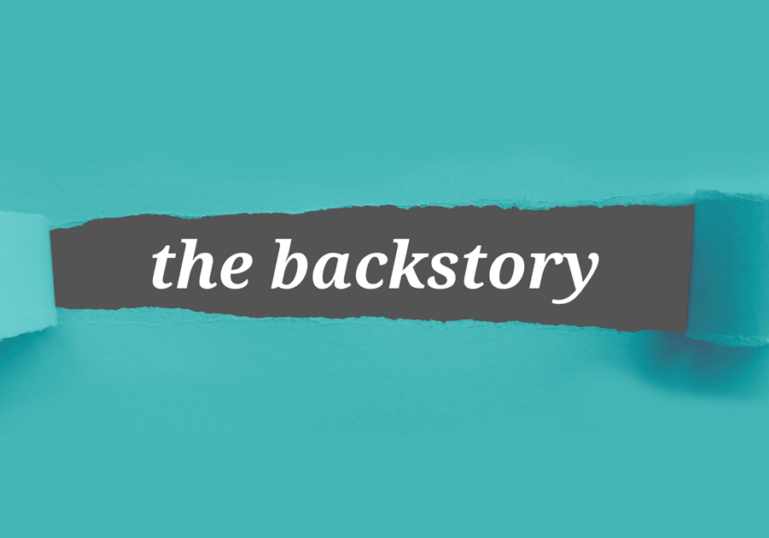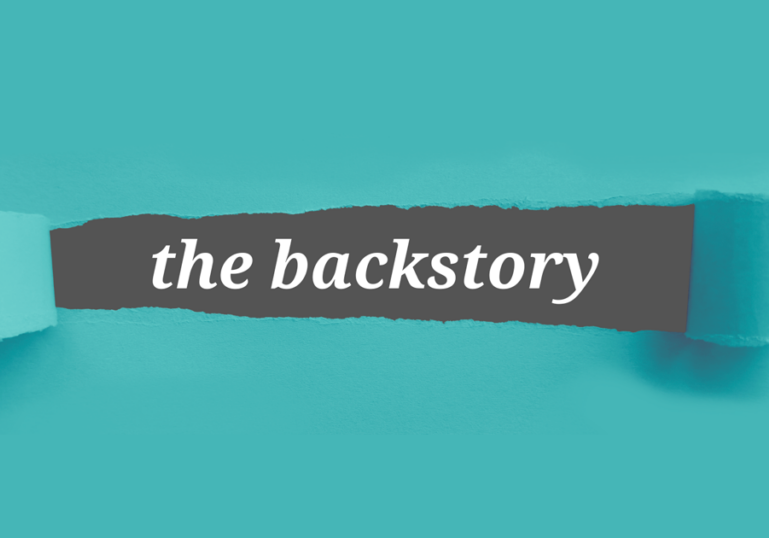You have survived—and maybe even thrived—as an HR professional through 2022, a year that saw some back-to-the-office movements post-pandemic and a great deal of volatility that is likely to continue into 2023: international recession fears, geopolitical unrest, and economic ups and downs across the globe. So now, as we get ready to address a fresh new year, let’s look at the essential to-dos you need to ensure you address.
- Establish an executive-agreed-upon work-from-home policy. Repeated studies have proved the efficacy of work-from-home in terms of productivity while heightening the need for managerial and peer interaction on a regular basis. However, a lack of clarity often exists as to what a company’s policy is, causing angst and uncertainty among employees.
What to consider:
-
-
-
- Are there positions or roles that absolutely require someone on-site (a waitstaff employee, a hotel housekeeper, ER staff, for example)? You will find it far more likely that professional employees work as well or even better on their own schedules from their home offices.
- Inclusion of a flex-time policy. Whether working at home or in an office, an employee needs to know they have the flexibility in scheduling medical appointments or picking up children from a bus stop without feeling those requests aren’t reasonable.
- Consider: according to McKinsey, only one in ten women wants to work primarily on-site, and many women point to remote and hybrid work options as one of their top reasons for joining or staying with an organization.1
- Develop managerial training on how to manage a hybrid workforce.
- Given that employees who can choose where they work are less likely to leave, it is incumbent on HR to ensure they have equal access to promotions and bonuses as their in-office colleagues.
- Work with your corporate assets management to determine if the company is renting more office space than it may need. Especially in large cities, expenditures for office space rental are a huge line item, and corporate prestige is no longer tied to the size of corporate headquarters. Consider a “hoteling” policy and enable as many employees to work from home as reasonable.
- “Professional nomading,” especially popular with younger employees, refers to working remotely and switching locations every few months. Different from simply work-from-home, this is “work-from-anywhere,” and while it may not be distinguishable in any significant way, a policy at least requires employees to let their managers know where they may be considered. Also, HR may want to know their employees’ overseas locations in case of issues that could affect their safety.
- While you are at it, consider job-sharing and other alternatives (a four-day work week?) that can increase productivity and allow for a broader talent pool of candidates.
-
-
- Start early to assess corporate-wide talent needs. In many industries, 2023 promises to be a volatile year for finding and retaining talent, while also, as we have seen recently in the tech sector, pruning of staff is underway, often in highly skilled areas.
What to consider:
-
-
-
- Are there new technologies used throughout your organization that will require technical or management skills you did not need previously?
- Is your company focused on new areas of innovation–for example, electric vehicles, hydrogen power, stream-lined clinical trials, plant-based food options, and AI-based predictive maintenance—that require talent that may not be in-house?
- Are there areas where current understaffing is proving detrimental to your success? For example, do you have sufficient staff dedicated to managing new Cloud releases to ensure new features are accommodated in a timely and consistent fashion?
- Are you engaged in M&A activity? Is your firm facing a potential buy-out or anticipating acquiring another company? You may have positional redundancy necessitating layoffs—but still face needs for new hires in the newly combined employee mix.
- Are you underutilizing the skillsets that you have internally today? Many employees added new skills to their repertoire during the pandemic—are they being put to their best use?
-
-
- Get intelligent about your talent. Once talent needs are identified, squelch the urge to immediately look outside your organization to address them. You may have the talent internally today—or employees with the existing skills, aptitude, and interest to be readily educated into these newer roles.
Where to start:
-
-
-
- As one of the best HR uses of AI, you can use it to scour your many different repositories of employee skill sets to get a complete picture of the skills you have within your organization (and don’t forget a look at social media profiles—often more up to date than any employee resume or internal profile.)
- Look for adjacent While this is a task that AI excels at, you too can look at talent profiles for the likely “can do” skillsets. For example, if an employee has a particular skill or expertise, what is the likelihood of also having a similar skill? Alternatively, what is the likelihood of learning a new similar skill quickly?
- Apply what you learn to your buy/build/ borrow strategies to help address point 2 above,
- Assess your learning curriculum. Are your compliance courses up to date? Are there classes that employees particularly despise that can be replaced with better ones? Are courses available that provide the growth and skill expansion that employees seek? The latter is key to retention, especially of younger employees, who see it as an organization’s responsibility to broaden their skills and enhance promotability.
- Also, consider learning in the course of work—pop-ups in software that automatically appear when an employee is stuck or stalled. This improves the employee experience, eases employee frustration, and enhances productivity.
-
-
- Ensure your website contains an AI “Explainability” Statement. Ethical AI requires transparency in how the technology is used in your organization. Along with policies you already have published, such as your privacy and data security statement, the audience is your employees, candidates, partners, and even your customers. You likely have AI embedded in your talent acquisition, candidate matching, internal mobility assessment, and succession technologies, as well as in other organizational software such as vendor and supply chain management and applications that are used in production environments. If you solely have AI in your talent acquisition solution, this statement can reside on your career site; if you use AI-embedded software for internal talent decisions, such as mobility, you can post solely on your intranet.
What to include:
-
-
- Where is AI used in your organization, and why.
- What factors are considered in AI-based decision-making, and how are ultimate decisions made?
- What are the positive outcomes of AI’s use in your organization (for example, faster response to candidates, better determination of fit within the organization, greater accuracy in assessments, bias-free hiring decisions, fewer production errors or delays, etc.)?
- What underlying engines are used and why (which may vary by application): did your company create its own engine (unlikely but possible) or procure third-party engines? Also, note when ensembles of engines are used by one solution and why.
- If you are a company that sells AI- embedded software, this” to-do” is especially imperative on two counts: first, for customers, so they can figure out the first four points above, and secondly, so your salespeople can have a clear, accurate and consistent way to position this ability to their prospects. In this case, the statement should reside on your public-facing website.
-
- Prepare for increased salary transparency. Finally, it’s clear that pay transparency is becoming a trend in the U.S.: there are currently 17 states that have laws addressing it. These laws allow employees to know pay ranges as part of the hiring, transfer, or promotion process and are intended to increase the likelihood of gender pay parity. For example, California’s Equal Pay Act requires employers, if asked, to provide the pay range for a job candidate and prevents employers from asking about candidates’ previous salaries.
Points to consider:
-
-
- Ensure that the salary ranges per position are, in fact, reasonable; using an overlarge range to attempt to pay male applicants more than their female counterparts immediately defeats your DEI&B.
- Colorado’s Equal Pay for Equal Work Act requires employers to list the pay range and benefits for every job opening. Even if you have just one employee working in Colorado, you’re required to post pay for any remote job that could potentially be performed in the state, and you must notify current employees of all promotion opportunities and keep records of job descriptions and wages.
- If you have existing pay bands for jobs, research where male and female candidates for positions or promotions fall in those bands: trends may surprise you.
- In 2021, 45 percent of HR leaders in the United States (and 35 percent of HR leaders globally) plan to improve pay equity analytics to drive transparency and action. Are you among them?
-
- Consider the “belonging” aspect of your DEI&B initiative. “Belonging” is not as simple a concept as we might think. One definition implies ownership—and no, your employees are not chattel, and they do not belong to your organization. Rather, when HR professionals talk about the need for a culture that fosters belonging, we mean creating an affinity for the workplace or the person’s role in it. Belonging is the feeling of security and support when there is a sense of acceptance, inclusion, and identity for each employee.
Steps to evaluate:
-
-
- Conduct a survey:
- Do your employees feel safe at work?
- Do they have a “buddy” they feel safe confiding in?
- Do they feel lonely at work?
- Are managers’ and their teams’ views of both their work objectives and their freedom to undertake that work in synch?
- Do you have employees who are afraid of their managers?
- A burdensome employee experience that includes too many laborious processes and procedures clearly affects both individual performance and business outcomes. Improve that experience through intuitive software and inviting office surroundings that encourage interactions.
- Consider a neutral ombudsperson positioned as a safe resource for employees to share or discuss issues that may lead to alienation or lack of well-being.
- Ensuring employees feel like they belong and someone “has their backs” is the first step in promoting discretionary effort at work – that willingness to go above and beyond.
- Conduct a survey:
-
- Prepare to support board changes that may impact your executive’s agenda: ESG, for example. Environmental, social, and governance (ESG) initiatives tied to corporate sustainability have taken hold. The recent Mercer executive rewards pulse survey of around 1,000 North American organizations finds that 44 percent are using or considering using ESG and DE&I metrics in their incentive plans to promote a focus on related. However, they also report execution is wildly varied: most companies have no linkage between executive pay and human capital management, and DE&I goals.
Things to consider:
-
-
-
- Consider working with your execs to re-articulate your corporate purpose with a broader definition of organizational success—one that puts all stakeholders’ (employee, customer, shareholder, and community) interests at the heart of the year’s agenda.
- Job security, organizational brand, and reputation are now the #2 reason that people join their current employer, and ESG is part of that. Research shows that one-third of surveyed employees indicate that their choice of future employer would be influenced by the employer’s articulated corporate purpose. What you do in ESG impacts your ability to hire and retain talent. Share your ESG stance with employees and on your career site.
- The Mercer report indicates that two in five HR leaders at U.S. companies believe that managing employees inclusively and with empathy will be a key to enterprise resilience going forward.2 Planning for empathetic management requires top-down support and begins with managerial training. How is this included in your management curriculum today?
- Review executive and top managerial incentive plans. As a positive example, Hyatt Hotels made increasing minority representation across various levels of management in the United States and globally the sole metric in its most recent long-term incentive awards.
-
-
- Apply what you learn from your SASB standards reports. If you are a publicly traded company, you are aware of the SEC’s rule requiring reporting on human capital management. Today, hundreds of companies follow the Sustainability Accounting Standards Board (SASB) Standards to do so. These standards identify the subset of environmental, social, and governance issues most relevant to financial performance and enterprise value for 77 industries. The Human Capital sustainability dimension of SASB Standards — one of five such dimensions— addresses issues that affect a company’s workforce, which is a key resource for creating long-term enterprise value. The Human Capital sustainability dimension encompasses management of (1) employee health and safety, (2) employee engagement, diversity, and inclusion, and (3) labor practices. Each of these areas may affect productivity and the ability to retain and attract talent.
Points to Consider:
-
-
- SASB or not, assess your status on health and safety: Covid numbers are increasing, employees who dodged the flu last year may be returning to newly germy offices, and safety at work, which used to be the concern of OSHA, is now far more lethal: fear of an active shooter in the workplace. Publish a “stay at home when you are sick” policy.
- You may find it helpful to review the SASB standards for reporting engagement, diversity, and inclusion information for your industry to see how the standards body defines these areas and what constitutes data of financial material value in the human capital arena.
- Meet regularly with your internal union leaders if you are in a unionized environment—they know what labor practices are in effect. Remember, your goals are the same: ensuring a safe working environment with adequate and equitable pay and working conditions for employees.
- Investor demand for financially-material sustainability information is growing. Global investors now recognize SASB Standards as essential requirements for companies seeking to make consistent and comparable sustainability disclosures.
-
- Plan for intelligent layoffs. Despite issues of attracting talent, many companies, such as technology companies and start-ups, are increasingly cutting staff. If your firm may face layoffs in the year ahead, you in HR will be the first to know.
What to consider:
-
-
- Publish an executive statement to all employees as to what business issues led to the need for staff reduction before actual layoffs begin. Employees are more receptive to their fate when they understand why it occurred.
- Use your talent intelligence to consider relocating the best people internally rather than just laying them off by headcount.
- Remember to address survivors: telling them why they were retained is as important as telling those who were laid off why they were let go. Avoid telling them that they will now be doing double the workload they had previously.
- Producing the same outcome in the same way with fewer people is unlikely: evaluate organizational or procedural changes that can accommodate a leaner workforce.
- Provide outplacement services. They should start immediately following the layoff – providing ex-employees with a reason to get up in the morning, and valuable information on resume preparation, interviewing both live and remotely, and the job market in their locations or industries – as well as camaraderie with others in their same position.
- Safety first: be alert for irate ex-employees or spouses seeking revenge, especially in open-carry states.
- Never lay people off on a Friday; a looming weekend is often a gateway to drink and despair.
-
- Address your “broken rung”—women in leadership. A recent McKinsey report found that women leaders in the U.S. are leaving their companies at the highest rate the authors had ever seen and at a much greater rate than male leaders. In addition, their data shows that for every woman at the director level who gets promoted to the next level, two women directors choose to leave their company.3 Progress to date has been poor; only one in four C-suite leaders is female, and only one in 20 is a woman of color. Only nine percent of the F500 have female CEOs.
How to start
-
-
-
- Focus on two broad goals: getting more women into leadership and retaining the women leaders you already have.
- Work with your executives on setting goals, then track their outcomes, and hold leaders accountable.
- Focus on metrics that matter – comparative length of time from hiring to promotion, most common exit levels and roles, managerial assessments, etc., as part of your regularly collected DEI&B data and analysis.
- Develop actionable training to help managers better support their teams, including fostering a sense of inclusion and belonging and creating manageable workloads.
- Reassess your mentorship and sponsorship programs: are they working as well as you anticipated? Where can they be improved? What mentors are more beneficial and why?
- Consider emergency child-care benefits.
- McKinsey reports on how the pandemic has changed what women want from their companies: the growing importance of opportunity, flexibility, employee well-being, and diversity, equity, and inclusion—all points here in your to-do list!
-
-
Endnotes
1 Women in the Workplace McKinsey and Company. October 18, 2022, Women in the Workplace | McKinsey
2 ESG and human capital management key to resilience and transformation. 2022. Mercer.
3 Ibid
4 Op Cit. Women in the Workplace 2022




